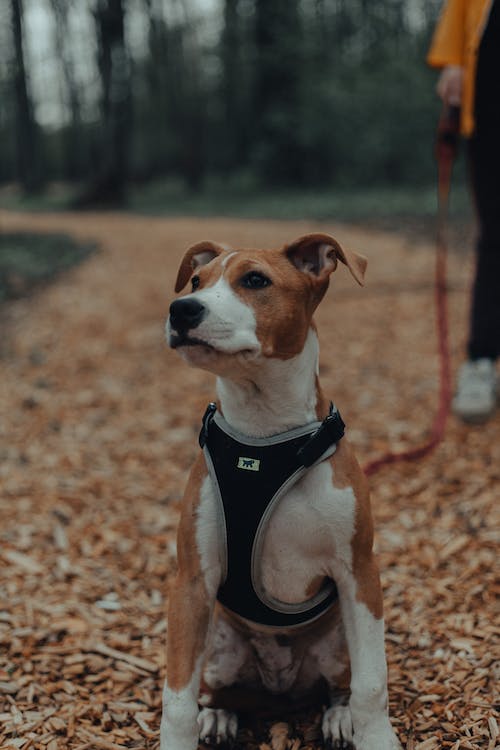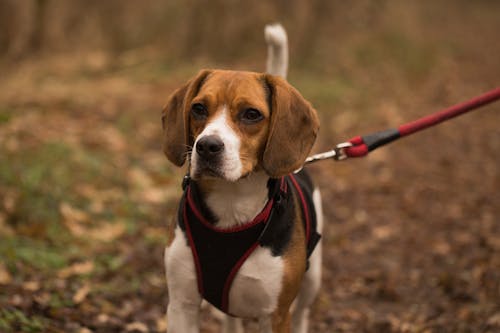Are you considering making the transition from a basic dog collar to a dog harness? Many people have made the switch because a harness offers more control of over a dog which is especially important on outdoor walks. Harnesses also prevent neck discomfort that standard dog collars cause. Despite dog harnesses being the best choice for our fur-legged friends, they must fit your dog properly in order to be most beneficial. In this blog, we will explain the importance of proper harness sizing for pups and help you determine your dog’s accurate harness measurements.
First, let’s review some of the primary benefits of a dog harness.
Less pulling on walks: A dog harness is positioned along the dog’s back and chest, which makes it more difficult for a dog to take his owner for a walk instead of his owner taking him for a walk. Unlike a typical dog collar that allows a dog to securely plant his feet on the ground, gain traction, and pull forward, a harness gives the dog’s handler more control of their entire body. This will prevent a dog from taking over on the walk and allow his handler better control.
Less pressure on the dog’s throat and neck: The design of a dog harness allows for the pressure points to be on his chest. This prevents your dog’s neck and throat area from being constricted, which is more comfortable and much safer than a standard dog collar. A dog harness is recommended even more so for dogs who suffer from disc conditions and arthritis.
Much better control of your dog: Some dogs can slip out of standard dog collars, which only offer one point of security around their necks. It is improbable for your pup to accidentally slip out of a properly fitted dog harness, even if your dog is a master of escape.
Basics Fitting a Dog Harness
As great as a dog harness is, it is only effective when it properly fits your dog. The harness must be secure against a dog’s body and should not allow for any slipping or rubbing against the skin. Harnesses that are too tight may cause discomfort for your pup. Harnesses that are too loose on your pup increase the risk of them slipping out of it and running off. This is why assuring the harness is placed properly over your dog is key.
The Two Finger Rule
When determining if your dog’s new harness is right for them, you should always follow the two-finger rule. This means that you should be able to place two fingers snuggly under the harness when it is secured. More than two fingers mean the harness is too loose. Less than two fingers mean the harness is too tight. This amount of slack allows for comfortable movement for your dog while also preventing him to be able to escape it.
Properly Measuring Your Dog for a Harness
Pet supply stores generally have a sizing chart for each product sold. This chart will provide measurements and specifications of each dog harness for sale. Comparing this size chart to your dog’s size is very important.
Measure Your Dog’s Neck Girth
You can use a flexible plastic measuring tape to measure your dog’s neck. Measure the area around where a collar would typically be placed. Remember to use the two-finger rule in this measurement, as some slack is necessary. Make a note of this measurement by writing it down.
Step 3: Measure Your Dog’s Chest Girth
Next, you will measure your dog’s chest girth by using the same measuring tape and measuring the widest portion of your dog’s rib cage. Be sure you measure around completely, with the end of the tape coming together on the top of the dog’s back. Make a note of this measurement by writing it down.
Step 4: Measure Your Dog’s Body Length
The last area measurement needed is your dog’s body length. Using the same measuring tape, measure your dog from his neck to the base of his tail. Certain dog harnesses require this measurement which is good to have just in case. Make a note of this measurement by writing it down.
After taking these measurements and writing them down, you will be able to compare them with the sizing chart for your harness of choice. It is also recommended to talk to staff at the pet supply store who can address any questions or concerns you may have before buying the harness.

Getting Adjusted to Using a Dog Harness
Getting adjusted to using a dog harness (for you and your pup) is generally an easy transition. Many dog owners find that once they start using a harness for their dogs, daily walks become easier and more enjoyable. Taking the time to find the proper dog harness will yield years of safer, more comfortable, and more enjoyable walks.
